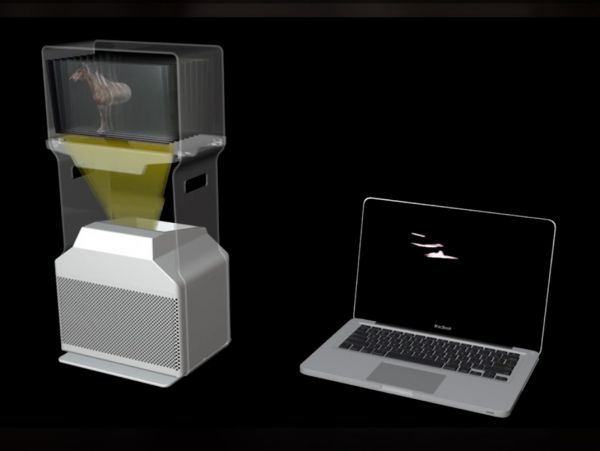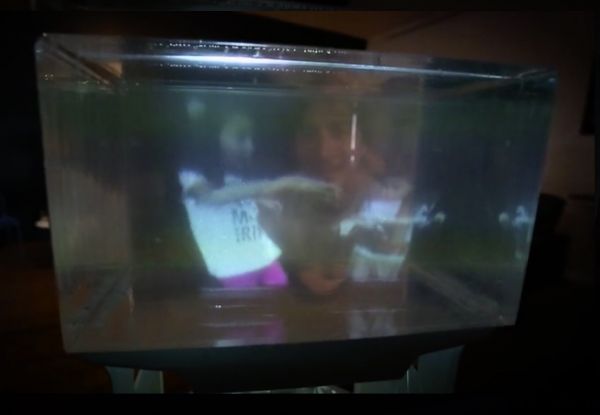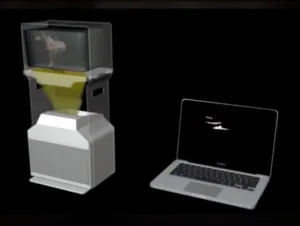As reported by CNBC and others, a Brooklyn, New York, based start-up called Looking Glass Factory s offering a volumetric display for the consumer. The display is called Volume and is a cube made of several display panes, one in front of the other. All of these panes are transparent and form a 3D structure or a form of volumetric display.
 Source: Looking Glass Factory
Source: Looking Glass Factory
Unlike other implementations, the display panes seem to be just passive components, with the active display being placed in the bottom part of the display housing. All together the display system is quite massive with the dimension approaching early CRT TVs and a 30 pound (13.6 kg) weight. Besides the physical dimensions, the display offers a total of about 2 million pixels, which the company calls 3D pixels. From the look of it, the pixels seem to be divided into 10 display panes giving each a resolution of about 200,000 pixels. Everything beyond this is just speculation at this point.
The main question is what you can do with the display? Besides playing some provided games, it is possible to playback owner-created content that seems to be acquired with a regular tablet. This means that the system has to create a 3D map from the content, much like turning on the 2D to 3D conversion on a 3D TV. It just happens that you will not need glasses to see things in three dimensions.
 Source: Looking Glass Factory
Source: Looking Glass Factory
The display available for pre-order and will set you back $999 now, which increases in increments to the final retail price of $2,099 as they start selling enough units. First shipments are expected for April 2017.
Analyst Comment
From the published video I would deduce that the imagery is not very bright and resolution is very limited. It’s important to keep in mind that this is a very cheap implementation of a volumetric display that is intended to pull consumers into the holographic realm. The makers are very clear that this is not a holographic display and I give them some big points for that.
There is no technical description of what kind of display they are using and how they create the images. It could be a projector-based system with a lens that directs the separate images to the different display panes. This would explain the banding and shadows one can see in the images. Since they need to keep the display panes separated, there are plenty of reflective surfaces in the cube, which would explain the washed out images. I have reached out to them to learn more about the technology and will follow up if and when more details become available.
In summary, they are trying to create a 3D display that can be used without any glasses or other restrictions. In a certain way it is an alternative solution to AR/VR which is currently capturing the interest of the media. Having a 3D volumetric display in the house is like having the first CRT TV in the living room, something that most people could not imagine. However, since the 3D boom is over for now, it can be expected that the interest in this kind of technology is likely to be mainly based on curiosity and not with any specific application that needs it. (NH)

